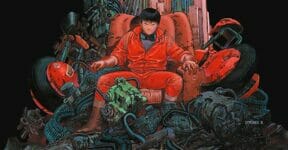Characters in Sci-Fi fantasy are the heart and soul of any story. Amidst futuristic technologies, fantastical creatures, and interstellar adventures, it’s the characters’ journeys, struggles, and triumphs that resonate with readers. We connect with iconic figures like Luke Skywalker and Katniss Everdeen not just because of their extraordinary settings, but because of their relatable human qualities and motivations.

Sci-fi fantasy offers a unique canvas for character creation. The genre’s blended nature allows for greater flexibility than pure science fiction, where adherence to scientific plausibility can sometimes restrict creative freedom. While grounding in scientific principles is valuable, the fantastical elements of sci-fi fantasy open doors to exploring characters with extraordinary abilities and facing otherworldly challenges. A lich, for instance, can be a skeletal sorcerer driven by dark magic, a concept easily accommodated within the genre’s flexible framework.
Worldbuilding is often praised for its immersive power in sci-fi fantasy, but its true effectiveness lies in how it interacts with the characters who inhabit it. Readers are drawn into these fantastical worlds when they can connect with the characters at the center of the narrative, understanding their motivations and empathizing with their struggles.
Creating Relatable Characters: Embracing Flaws and Complexities
Memorable characters are built on relatable personalities. Their behaviors, quirks, and preferences should be compelling enough to keep readers engaged. However, relatability doesn’t equate to perfection. Even the most valiant heroes have weaknesses, and even the most terrifying villains can possess redeeming qualities.
The key to creating relatable characters is to imbue them with realistic flaws. A flawless hero feels artificial and distant. Allowing your heroes to stumble, make mistakes, and even fail creates opportunities for growth and strengthens their connection with the audience. Similarly, granting villains moments of vulnerability or displaying unexpected acts of kindness adds depth and complexity to their characterization.
Consider these examples:
- The conflicted hero: A noble warrior forced to employ morally ambiguous tactics to achieve a greater good.
- The sympathetic villain: A ruthless leader driven by a desperate desire to protect their people.
These complexities mirror the nuances of human nature, making characters more believable and engaging.
Relatability isn’t synonymous with likeability. Just as in real life, some characters will be admired while others are despised. The focus should be on authenticity. Every decision a character makes should align with their established traits and perspectives. However, characters can evolve throughout the story, their experiences shaping their beliefs and influencing their choices. This growth should feel organic, arising from significant events and challenges rather than sudden, unexplained shifts in personality.
Key Questions for Character Development:
Developing well-rounded characters requires thoughtful consideration. These questions can guide the process:
- Character Arc: What kind of journey will your character undertake? Will they experience positive growth, a tragic downfall, a transformative change, or remain relatively static? At what points in the story will their development be evident?
- Flaws and Motivations: What imperfections make your character relatable? Do these flaws stem from internal conflicts, misguided ambitions, hidden secrets, or other sources? How do these flaws affect their personality and actions?
- Decision-Making: How does your character approach challenges and difficult choices? Do their strengths and weaknesses influence their decision-making process?
- Impact of Circumstances: Will external events alter your character’s personality? If so, how significant will these changes be? Will they be gradual and believable, or abrupt and jarring?
- Interpersonal Relationships: How do your characters interact with allies and enemies? Do these interactions reveal different facets of their personality?
Effective character development is crucial for any genre, but it holds particular significance in sci-fi fantasy. The genre’s expansive nature allows for intricate character arcs and complex relationships. By carefully crafting characters with relatable flaws, compelling motivations, and believable growth, writers can create stories that resonate deeply with readers and leave a lasting impression.
Other Things You Might Want to Know:
What is an Antihero?
An antihero is a central character who lacks traditional heroic qualities but nonetheless fulfills a heroic role. They might be morally ambiguous, flawed, or even outright villainous in some aspects, yet they still drive the narrative forward and often achieve positive outcomes, albeit through unconventional means. Characters like the Punisher and Wolverine exemplify different facets of the antihero archetype.
Iconic Movie Villains and Heroes (According to the American Film Institute):
Villains:
- Dr. Hannibal Lecter (The Silence of the Lambs)
- Norman Bates (Psycho)
- Darth Vader (The Empire Strikes Back)
- The Wicked Witch of the West (The Wizard of Oz)
- Nurse Ratched (One Flew Over the Cuckoo’s Nest)
- Mr. Potter (It’s a Wonderful Life)
- Alex Forrest (Fatal Attraction)
- Phyllis Dietrichson (Double Indemnity)
- Regan MacNeil (The Exorcist)
- The Queen (Snow White and the Seven Dwarfs)
Heroes:
- Atticus Finch (To Kill a Mockingbird)
- Indiana Jones (Raiders of the Lost Ark)
- James Bond (Dr. No)
- Rick Blaine (Casablanca)
- Clarice Starling (The Silence of the Lambs)
- Rocky Balboa (Rocky)
- Ellen Ripley (Aliens)
- George Bailey (It’s a Wonderful Life)
- T. E. Lawrence (Lawrence of Arabia)
This expanded and revised blog post provides a deeper exploration of character development in sci-fi fantasy, incorporating more detailed explanations, examples, and relevant information to meet the word count requirement.







